Peoria Audubon Society is a local affiliate of both:
National Audubon Society & Illinois Audubon Society

Birding the Illinois River
Catch the Fall Shorebird Migration - 2011
Photo Gallery:
Saturday August 20, 2011 Previous Page 1 2
According to the Illinois State Water Survey, Sand Lake has become a notorious natural resource feature in the Havana area. This shallow lake fills up with heavy seasonal rains. Depending on the height, it has a variable area within the local fields. This season, it made a good refuge for migrating shore birds.
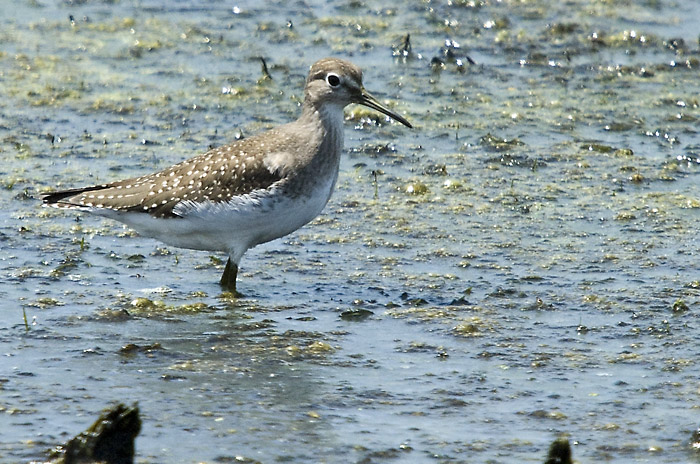
Solitary Sandpiper at Sand Lake, Havana, IL
Another Solitary Sandpiper hunts for food in the Sand Lake
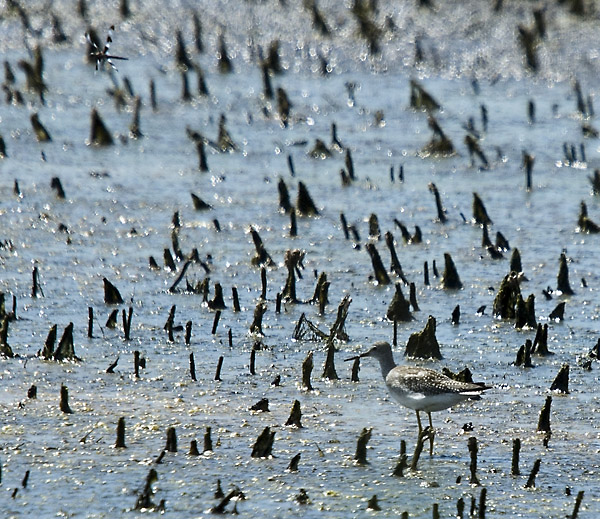
Solitary Sandpiper at Sand Lake
Part of the year, the Sand Lake becomes or was a farm field as exhibited by the plant stalks in the above picture.
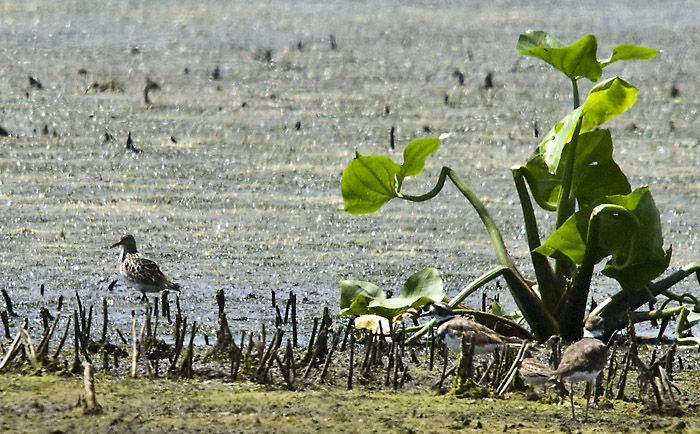
Solitary Sandpiper and Killdeer at Sand Lake
For some reason, there were many instances of the large leafed plant on the above photo at the Sand Lake. No one in our group knew what it was, but had seen it before.
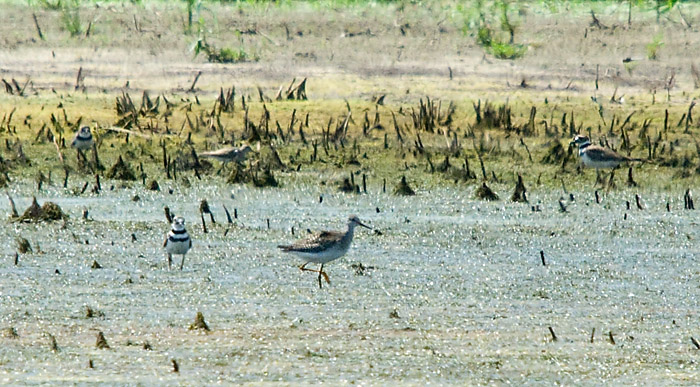
Lesser Yellowlegs and Killdeer at Sand Lake
At one of the Sand Lake sightings, a Lesser Yellowlegs was seen with the other shorebirds. The above photo of the yellowlegs was highly cropped and is almost too distant for viewing with binoculars. At this distance, a spotting scope is welcomed.
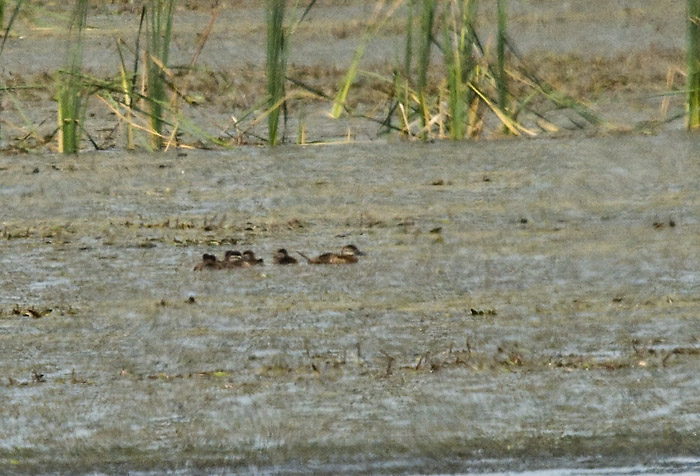
Family of Ruddy Ducks at Sand Lake
Regarding distant viewing, the family of Ruddy Ducks above needed to be viewed with a spotting scope. This image too is highly cropped to show the ducks. Additionally, the image has a fair amount of mid-day shimmer or thermal distortions from the sun.
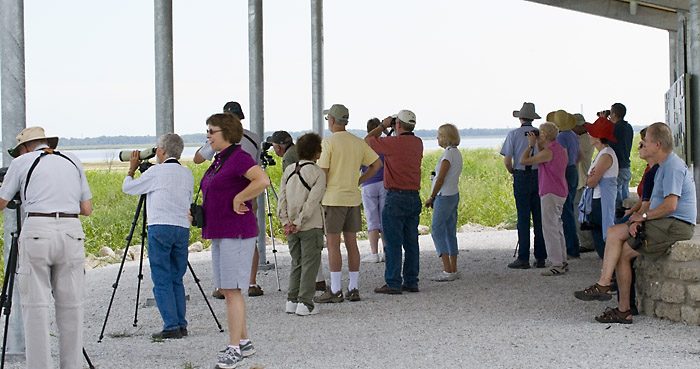
Viewing Shelter at Emiquon; Built by The Nature Conservancy
As we continued to Emiquon, an area restored by The Nature Conservancy, we had a chance to stop at the new viewing shelter.
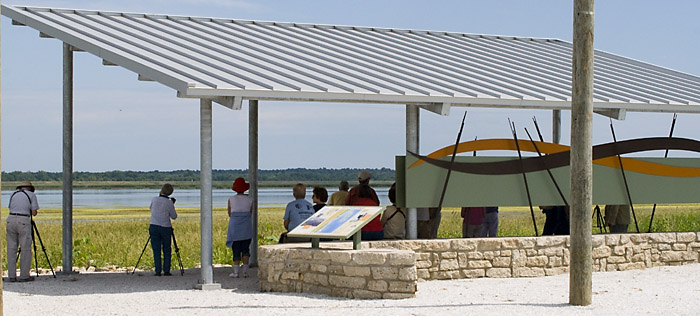
Viewing Shelter at Emiquon; Built by The Nature Conservancy
The shelter provided a panoramic view of the restored 7,100-acre lake that was purchased by private donations through The Nature Conservancy.
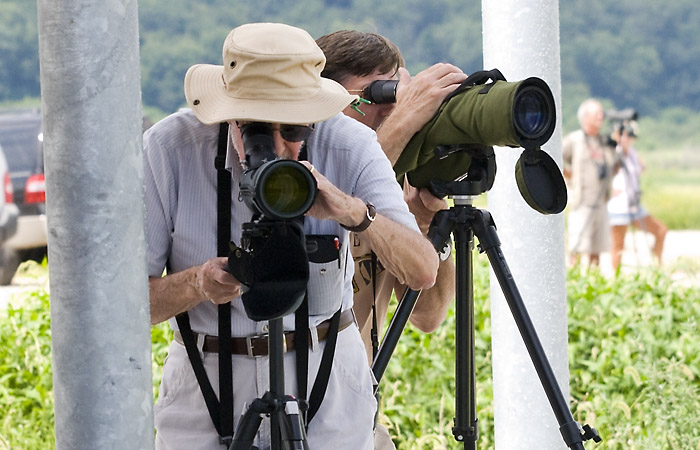
Henry Sinclair Scoping Waterfowl at Emiquon
The shade of the shelter made a very nice place to bring out the scopes to view waterfowl.
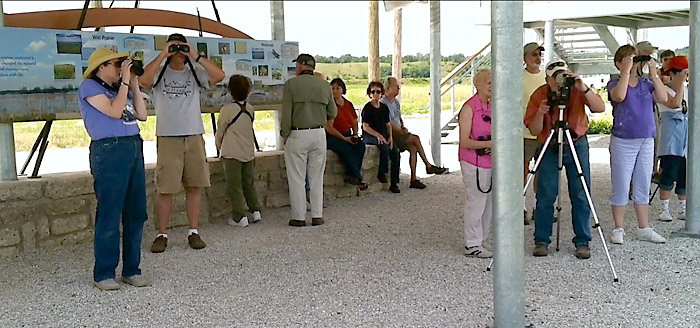
Inside the Viewing Shelter at Emiquon
The shelter also had a small information board that described the history of Emiquon.
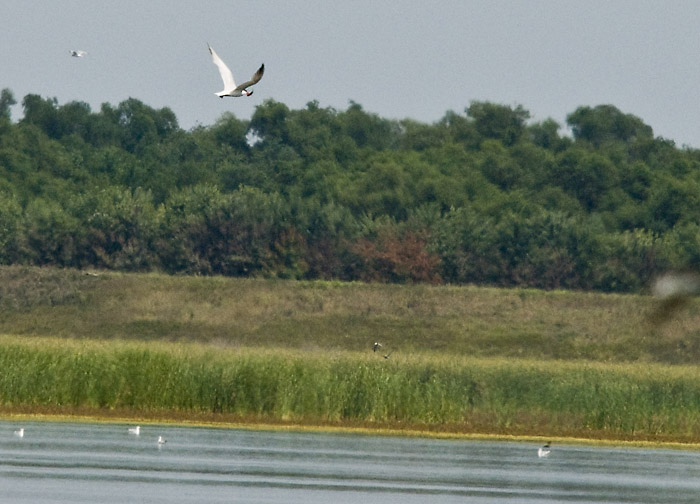
Caspian Tern with Fish in Beak at Emiquon
As we watched a Caspian Tern fly around looking for fish to catch and eat. In the above photo, the tern has a small fish in its beak. Mike Miller described the Caspian Tern as the Bird with the Carrot for a beak.
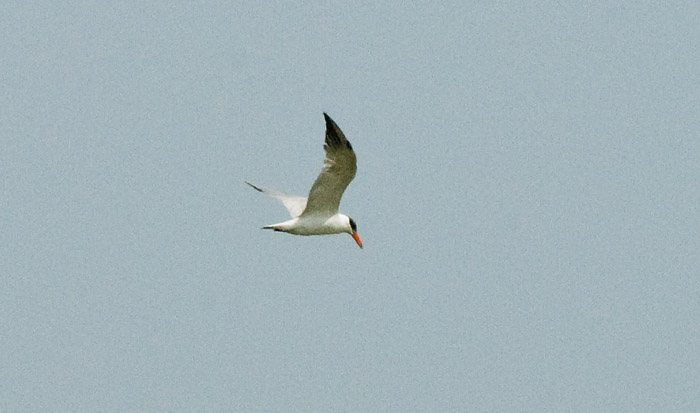
Caspian Tern at Emiquon
Although the Caspian Tern was a considerable distance away, occasionally, it got a little closer for a photo. The tern was clearly focused on watching the lake below for more fish.
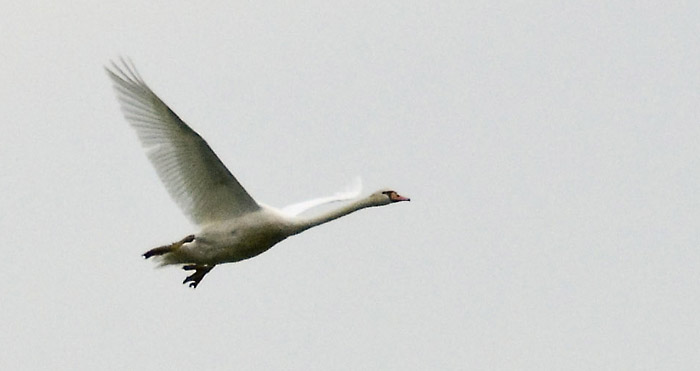
Flyover of Mute Swan
At one place, a Mute Swan did a solo flyover
The Peoria Audubon Society wishes to thank Mike Miller and the Peoria Park District (PPD) for providing support and the logistics of this trip and for providing the Peoria Park District vans for the transportation. Peoria Audubon also wishes to thank Maury Brucker, co-organizer of the trip, who scouted the area a couple days earlier to guide us to where the birds were. We also wish to thank JD Russell and Mike Ingram of the PPD for helping drive the vans and provide snacks for the group. Several other PPD employees also provided innumerable support to make this a very interesting as well as educational trip.
Photos courtesy of Dennis Endicott - All rights reserved